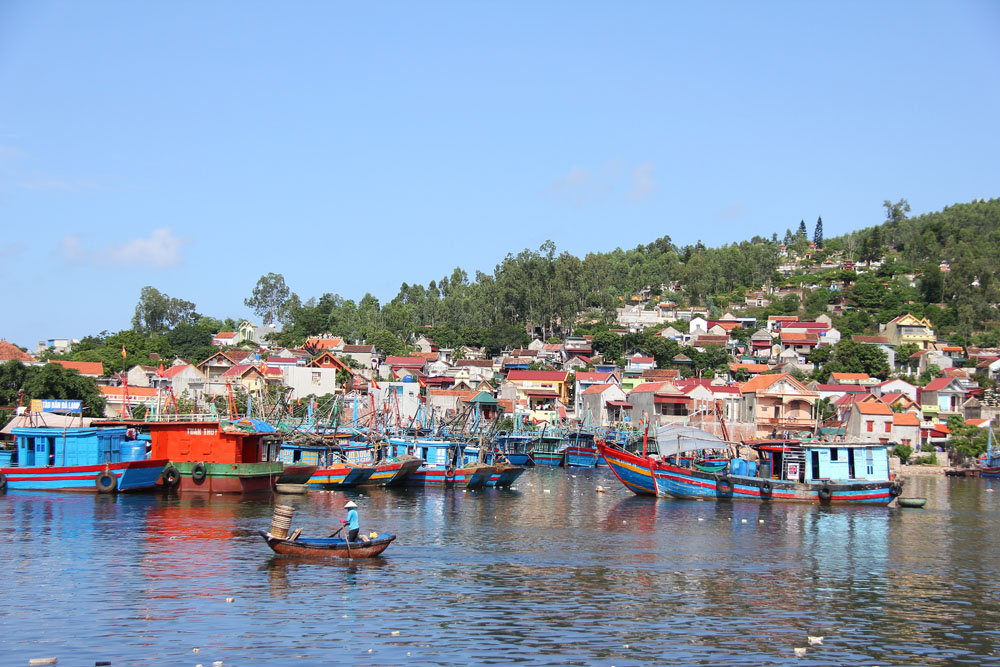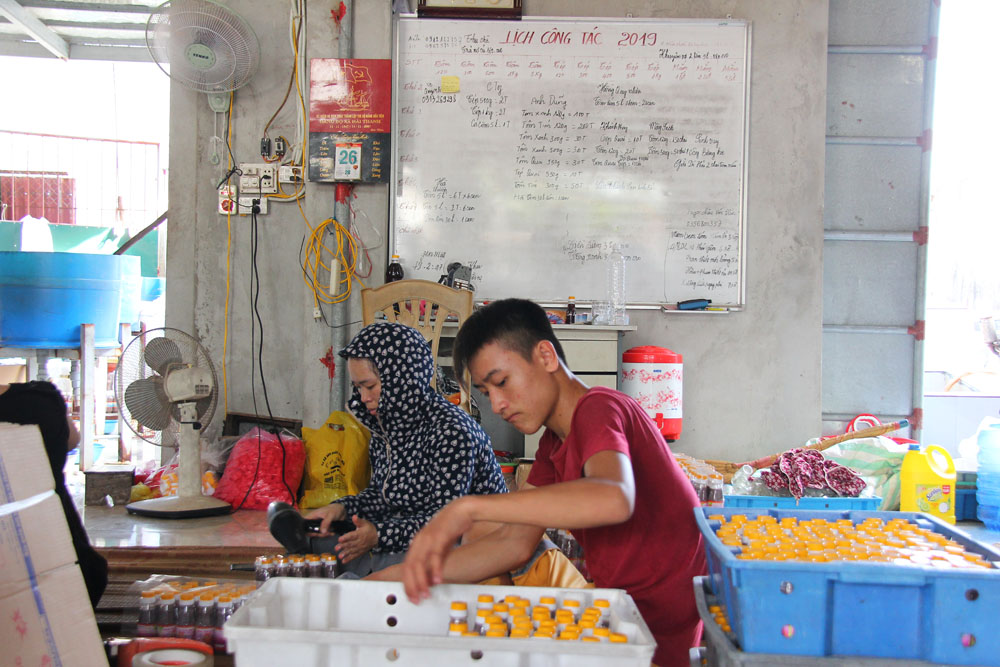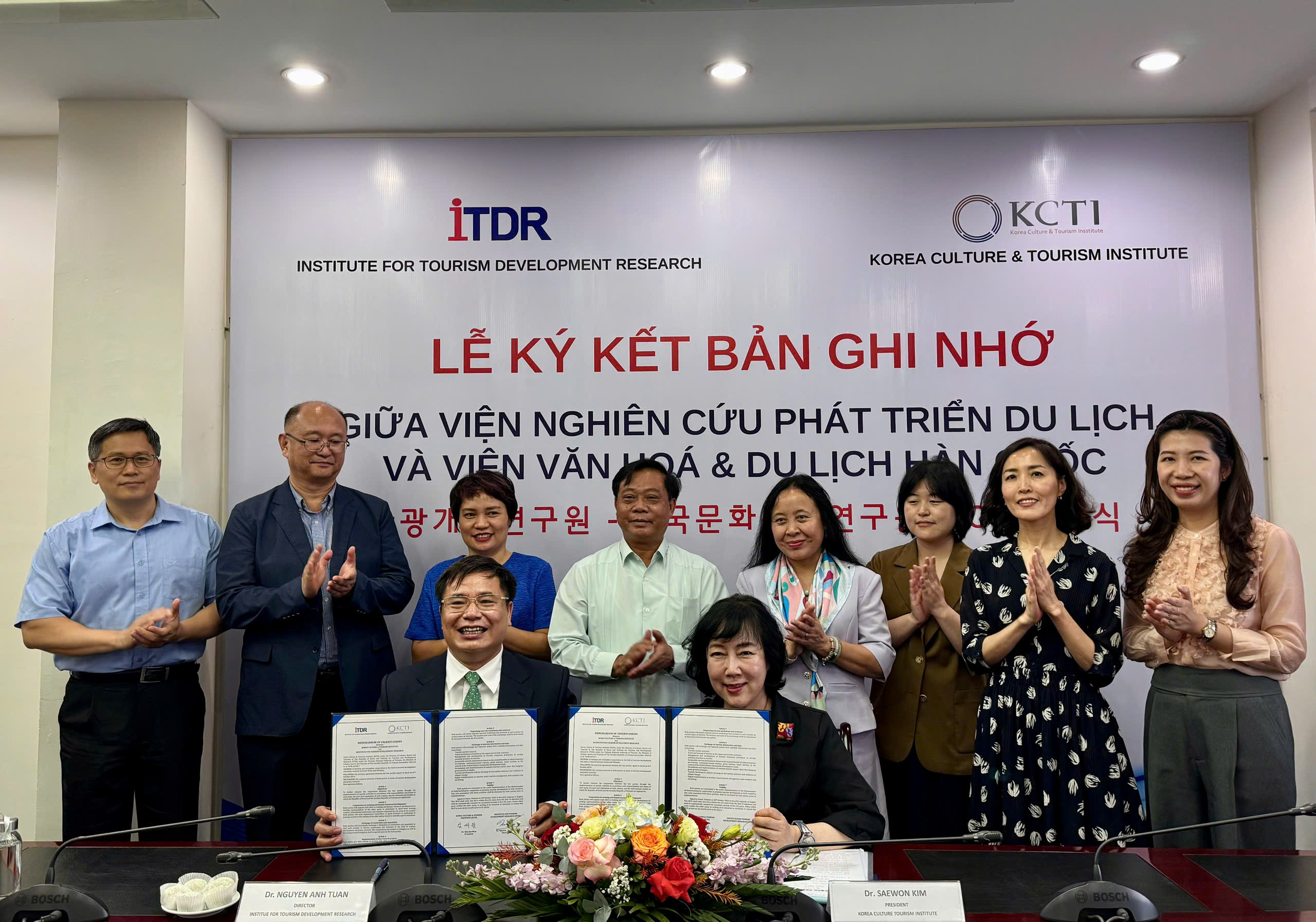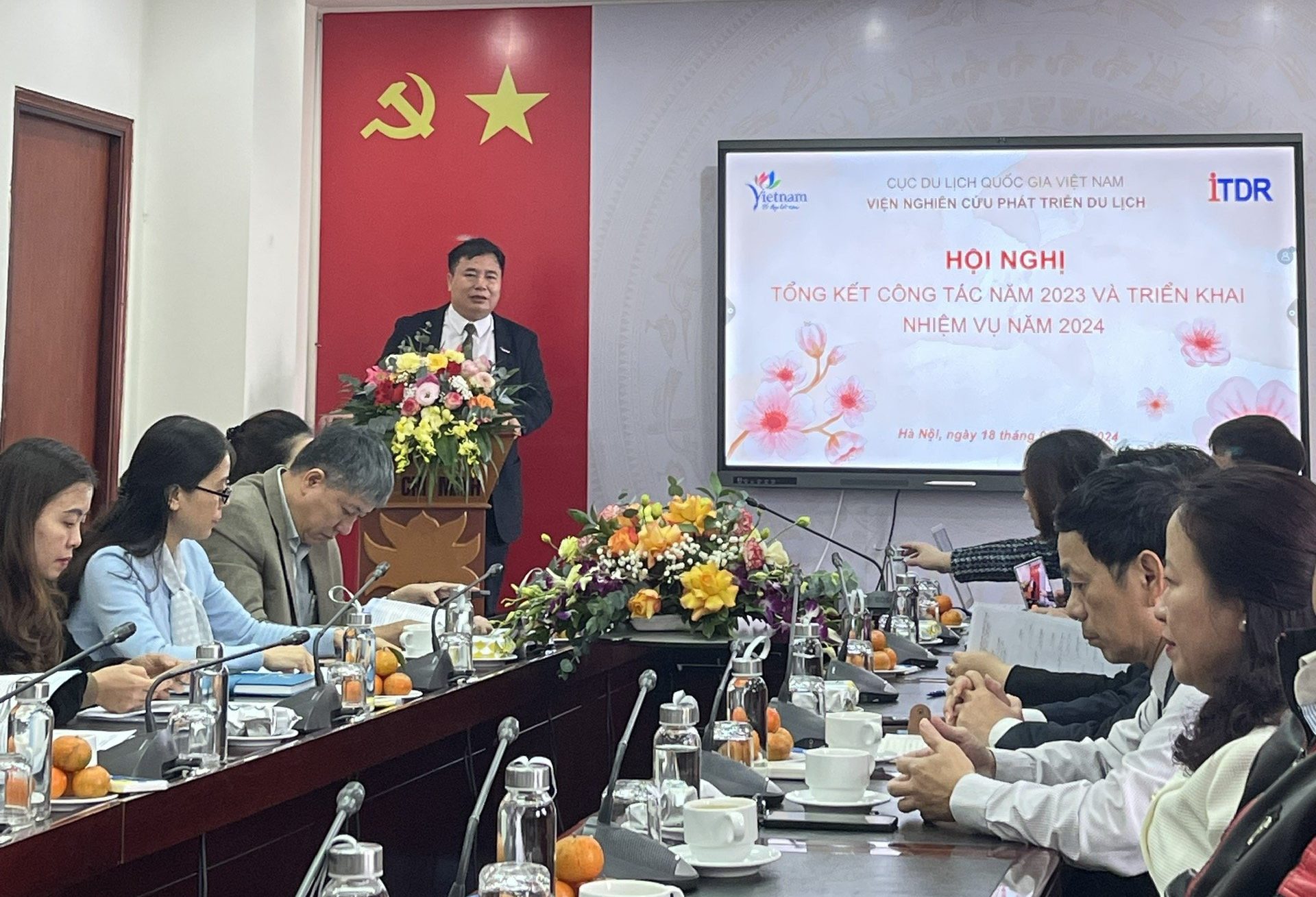Livelihoods shifting, developing tourism in coastal provinces of Viet Nam in response to climate change
Summary:
Climate change impacts coastal communities, which requests them to change their livelihood strategies towards the approach of less dependent on natural resources. This paper analyzes the impacts of climate change on communities in coastal provinces of Viet Nam, showcasing some good practices of livelihood changing in adaptation to climate change, thereby, identifying important issues related to tourism development.
Key words: livelihoods, climate change, tourism development
1. Introduction
Viet Nam is situated by the East Sea, which owns its waters and continental shelf under sovereignty and national jurisdiction, is approximately 1 million km2 (3 times larger than the mainland area); it has 3,260km long coastline, which means every 1 km of the coastline per 100 km2 land, (the average figure 600 km2 of the world’s land with 1 km of coastline); There are about 3,000 large and small islands near the shore and two archipelagos of Hoang Sa and Truong Sa. 28 provinces and cities throughout country are under the Central Government, accounting for 42% of the land area and 45% of the national population (T.M.Tuan, 2013). Along the coastline of Viet Nam, there are about 125 beaches, including large beaches with 15 – 18km length and a number of small beaches with 1-2 km length, which are qualified to serve tourists. Our country’s beaches spread from the North to the South. Such a number of scenic beaches from Mong Cai to Ha Tien as Tra Co, Sam Son, Cua Lo, Nhat Le, Cua Tung, Canh Duong, Lang Co, Non Nuoc, My Khe, Sa Huynh, Quy Nhon, Dai Lanh, Van Phong, Nha Trang, Ninh Chu, Ca Na, Mui Ne, Long Hai, Vung Tau, Ha Tien…
Coastal areas and islands with characterised by fishing communities are advantages that can be become a specific tourism product. In Viet Nam, the coastal islands that can be developed community-based tourism (CBT) are such islands as Bach Long Vi and Ha Long, Cat Ba, Con Co, Cu Lao Cham, Ly Son, Con Dao, and Phu Quoc. The coastal fishing villages which favorable for tourism development are mainly in the Central region, from Quang Binh to Binh Thuan. For coastal islands, it is possible to form island groups to exploit and develop CBT, namely: Bach Long Vi island group; Limestone islands in Ha Long-Cat Ba; Central coast island group; offshore islands group of Con Dao and Phu Quoc. (VNAT, 2013)
In the context of climate change which affects coastal livelihoods, communities are facing more risks and vulnerabilities on a global scale than anywhere else. Increasingly, man-made pressure is related to overexploitation of marine resources, fishing and land-based activities. Climate change slows down the recovery of marine ecosystems for human welfare and livelihoods (Adger et al., 2005; Lebel, 2012). Under the increase of frequency of extreme weather such as tornadoes, sea storms, the coastal people’s livelihoods are seriously affected, such as coastal agricultural production and fishing. In addition, salinity levels, although rising slowly over time, pose a major threat to traditional agriculture and mangrove ecosystems. (Moniruzzaman, 2012). Studies have shown diverse livelihood strategies to cope with climate change in coastal areas, depending on the adaptability of households, communities, territories and even on the national level. Livelihoods responding to climate change are contextual and depend on different adaptive classification criteria.

Viet Nam’s coastal areas are increasingly threatened by rising sea levels, storms, floods and droughts. The main livelihoods that will be most directly affected are fisheries (especially aquaculture), agriculture, tourism and shipping (Jeremy Carew-Reid, 2008, p.7). About 58% of Viet Nam’s coastal livelihoods are based on agriculture, fishing and aquaculture (Peter Chaudhry and Greet Ruysschaert, 2007, p. 2) which are highly dependent on climate and water resources. This will directly impact poor coastal communities that rely heavily on natural resources, especially fisheries resources, to implement livelihood strategies.
Climate change is evident in coastal areas such as increasing temperatures, more fluctuating rainfall and more extreme weather events. In Ha Tinh, one of the central provinces which are strongly affected by climate change, surface temperature is in the rising trend more than it was in the past decades. Ha Tinh is considered as one of the regions with the highest temperature increase in Viet Nam. According to the national climate change scenario, the average temperature of Ha Tinh in particular and the Central region in general will continue to rise to around 20C – 40C; rainfall in the dry season will decrease by 1% – 12% while it tends to increase in the rainy season by 6% – 19% and the sea level increases by 74 – 100cm. Droughts and heat waves have markedly increased in the Central region compared to other regions in the country. The shortage of irrigation water and domestic water in the dry season is one of the most prominent phenomena recently. (H.T.A Phương, 2016)
There is a relationship between the level of weather risk and alternative livelihood options at different levels. As risks increase, people tend to choose more diverse, planned and sustainable livelihood strategies. Specifically, based on the traditional livelihoods that rely mainly on natural resources and marine resources, people conduct activities to improve livelihoods, diversify livelihoods, supplementary livelihoods and alternative livelihoods (possibly as auxiliary or non-agricultural livelihoods). Future livelihood strategies are aimed at multiple goals such as: increasing income, reducing risks, reducing dependence on resources, developing stably and sustainably in the long term. The idea to lead alternative livelihoods is to create incentives for people to stop current unsustainable livelihood activities to shift to more sustainable livelihood ones. In order to do this, alternative livelihoods need to bring more economic benefits. (Đ.T. Diep, 2016).
2. Good practices of livelihood shifting in adaptation to climate change
2.1. Pangandaran tourism destination in Java, Indonesia
Pangandaran is a popular tourist destination in Java, Indonesia. It is vulnerable from the impact of climate change. Rising sea levels and higher temperatures are affecting the ecosystems in the area, and the 2006 tsunami caused a lot of damage along the coastline. Tourism activities and attractions in Pangandaran, such as swimming, surfing and diving, all rely on the well-being of the natural surroundings. Minimizing environmental impacts therefore marks a crucial long-term investment for the many local tourism stakeholders.
STREAM (‘Sustainable Tourism through Energy Efficiency with Adaptation and Mitigation Measures’) is a joint collaboration of UNWTO and the Indonesian Ministry of Tourism and Creative Economy and serves as a practical example of how the tourism sector can engage local communities to be part of a continuous, sustainable solution when facing challenges of climate change. The project goal is for STREAM to function as a lighthouse example on reaction to climate change to be replicated for other destinations in Indonesia and beyond. As part of the STREAM project, UNWTO is working with local partners to implement two initiatives directly related to the restoration and conservation of Pangandaran’s mangroves and coral reefs.
Why mangroves and coral reefs? Simply put, mangroves can be described as environmental super heroes. Among other things, they serve as carbon sinks since mangrove plants absorb carbon dioxide and store carbon in their sediments. They also protect against shoreline erosion, stabilize land elevation, and improve water quality – thus protecting other ecosystems in nearby waters such as coral reefs. Further, they provide a source of food and income for the local population since they function as nursery and feeding ground for both marine and terrestrial flora and fauna, out of which some, such as crab and different species of fish has commercial value. Due to the vast amount of flora and fauna harboured – they can also serve as tourist attractions in themselves.
In order to restore Pangandaran’s mangroves, the STREAM project has launched a successful mangrove-planting programme. So far, almost 2000 people from various organizations and community groups have participated in the program, planting more than 35,000 mangroves in a conservation area of 17 hectares. As of March 2013, 31,418 are recorded alive – a survival rate of nearly 90%. To help spread awareness about the importance of mangroves, a mangrove-learning centre has been built. STREAM is also actively involving local school children in environmental education, planting, and monitoring of mangroves through its Mangrove Ambassadors Programme – currently including 18 schools and 400 proud ambassadors!
UNWTO supported the restoration and protection of coral reefs in Pangandaran, including growing coral reefs, where tourists received reefs to take care, local tourism guides and scuba diving instructors and fishermen were trained, awareness raising trainings were implemented on ecosystems and coral reef protection and reef monitoring and evaluation skills. In addition, UNWTO and local partners developed the “Green Energy” tour packages, so that visitors to Pangandaran can enjoy the beautiful landscape environment by bicycles and boats while they have a deeper understanding on the importance of environmental conservation.
2.2. CBT in Triem Tay village, Quang Nam, Viet Nam
Triem Tay Village in Quang Nam Province’s Dien Ban District rests on the bank of the Thu Bon River. The village has been reorganised as a community-based tourism site in the province. A rural villa called Triem Tay Garden, built on the river bank, is one of the most visited eco-destination sites after Hoi An. The garden is just five minutes by boat from Hoi An.
Erosion pushed hundreds of villagers away from their home six years ago, but since then French-Vietnamese architect Bui Kien Quoc has stopped the river’s encroachment and turned the area into an eco-tourism destination. Hundreds of villagers in Dien Phuong’s Triem Tay Village were evacuated six years ago due to serious erosion that had devastated the area over the co The river has encroached another 10m onto their soil during flood season every year, and dykes weren’t built to protect the village, either. The endangered sunken riverbank section, stretching 150m along the river, has since become a tourism eco-destination – rural-style villa called Triem Tay Garden. The 13,000sq.m site is now protected by a ‘green’ dyke – a system with combined layers of concrete foundation, soil, grass and water. A five-year programme of design, construction and plantation of vetiver and domestic grass varieties created a bio-dyke to prevent aggressive floods from affecting the shore. A bio-dyke – a soft, protective wall – to ease the power of the river during flooding season. Also, the International Labour Organisation and UNESCO helped with a Community Based Tourism (CBT) project. Triem Tay- a very peaceful but poor village faced with land erosion was revitalized with tourism development. The development in Triem Tay is not only for poverty reduction of local people who wanted to leave their land due to the land losses but also a model for climate change mitigation and poverty reduction of provincial and national level. Green solutions for protecting land from the water erosion were applied with a strong support from the government both in policies and finance. Tourism development in Triem Tay is the result of a high motivation from local people, immense support of the government and technical assistance of the ILO and UNESCO. (MOCST, 2016)

3. Recommendations and Conclusions
3.1. Recommendations:
Diversify tourism services, based on local climate and weather characteristics to minimize the seasonality in tourism, such as building homestays establishments, in combination with gastronomy, traditional arts performance and historical and cultural relics visits according to the regional characteristics.
Building unique products in specific style, differentiating each coastal region, but having close links with other coastal regions to create a tourism continuity for the whole country. For example, building unique and chained tourist routes connecting coastal areas, which is able to complement one another.
Mobilizing local people and tourists to protect the coastal environment, participating in projects on regeneration and protection of coastal tourism resources, afforesting to have sand and wind prevented forests.
Training tourism service and business skills to transform production model into tourism services provision.
3.2. Conclusion:
In fact, tourism activities are seasonal, combined with the increasingly significant influence of climate change, making it more challenging for coastal communities. Seasonality has a great influence on fishing, fisheries, agriculture, construction and tourism. In addition, the erratic weather, especially frequent storms along the coast, also causes serious damage to the coastal communities in terms of people, properties and infrastructure. In addition, the infrastructure for tourism in coastal provinces faces the shortage, limited service quality, constrained tourism promotion, under-diversified and poor-attractive products. In the context of the risk of pollution and destruction of the marine environment, Viet Nam’s traditional coastal villages are facing great challenges that need to be addressed and new livelihood solutions are on the request. Although people have initially taken some measures to cope with climate change, they are coping rather than adapting to livelihood risks caused by climate change. Studying on the impacts of climate change on coastal provinces is in great need of supportive policies of the Government to achieve sustainable livelihoods for coastal communities in the context of climate change.
REFERENCES:
REFERENCES:
- Adger, W., Hughes, T., Folke, C., Carpenter, S & Rockstrom, J. (2005), “Social – Ecological Resilience to Coastal Disasters”, Science 309, 1036 – 1039
- Jeremy Carew -Reid, (2008), “Rapid assessment of the extent and impact of sea level rise in Vietnam”, ICEM – International center for environmental management, Indoorpilly, Queensland, Australia
- Moniruzzaman (2012), “Impact of climate change in Bangladesh: water logging at south-west coast ”, Springer, Berlin
- Scoones I. (1998), “ Sustainable rural livelihoods: A framework for Analysis ”, Working paper 72, Brighton, UK: Institute of Development Studies
- Truong Minh Tuan (2013), “ Development of marine economy needs a strategic vision ”, Propaganda Journal No. 01-2013, p. 11
- Ministry of Culture, Sports and Tourism, Program for Developing Environmentally and Socially Responsible Tourism Capacity Program funded by the European Union (2006), “Guidelines for good implementation of sectoral sustainable development Vietnam tourism in the context of climate change ”, EU-ESRT Project Management Board of Vietnam
- National Administration of Tourism – Tourism Research and Development Institute (2013), Project of developing community based tourism in combination with hunger eradication and poverty reduction and rural economic restructuring until 2020 ”, MOCST
- Tran Tho Dat, Vu Thi Hoai Thu (2012), “ Climate change & Coastal livelihoods ”, Vietnam Development Forum, Transport Publishing House Transport, Hanoi
- Tran Tho Dat, Vu Thi Hoai Thu (2011), “Adaptation of coastal livelihoods to the impacts of climate change: A case study in Giao Thuy district, province Nam Dinh ”, Economics & Development magazine, 2011
- Huynh Thi Anh Phuong (2016), “ Climate change adaptation livelihood strategies of rural women in Central Vietnam ”, Journal of Science and Technology, University Science – Hue University, vol 4, No. 2 (2016), p. 193
- Do Thi Diep & Nguyen Van Song (2016), “Livelihood strategies to respond to climate change in coastal areas: Theory and lessons learned for Vietnam”, Journal of Economics & Development, Issue 229 (II) July 2016, p. 2
Chien Thang





 Address: 58 Kim Mã, Ba Ðình, Hà Nội
Address: 58 Kim Mã, Ba Ðình, Hà Nội Phone: (84-24) 37 34 31 31
Phone: (84-24) 37 34 31 31 Fax: (84-24) 38 48 93 77
Fax: (84-24) 38 48 93 77 Email: info@itdr.org.vn
Email: info@itdr.org.vn Website: https://itdr.org.vn
Website: https://itdr.org.vn




